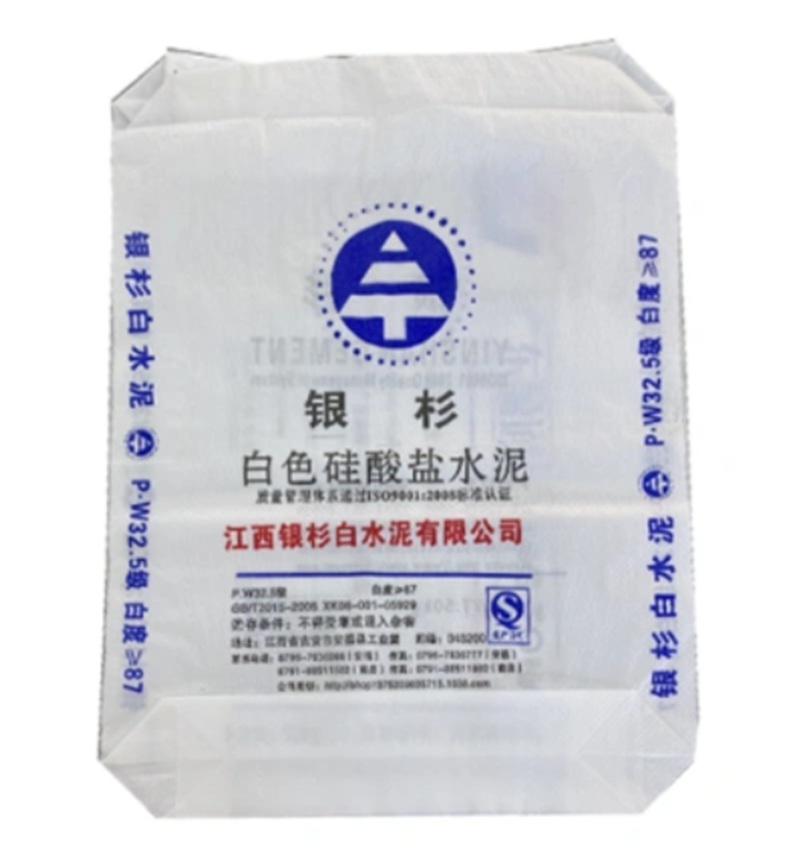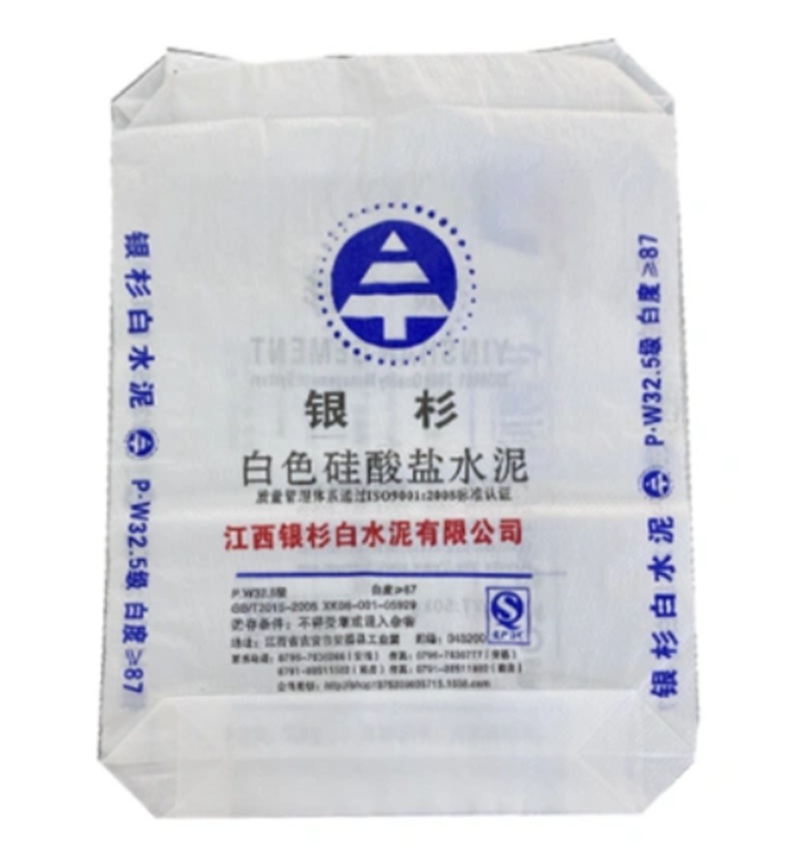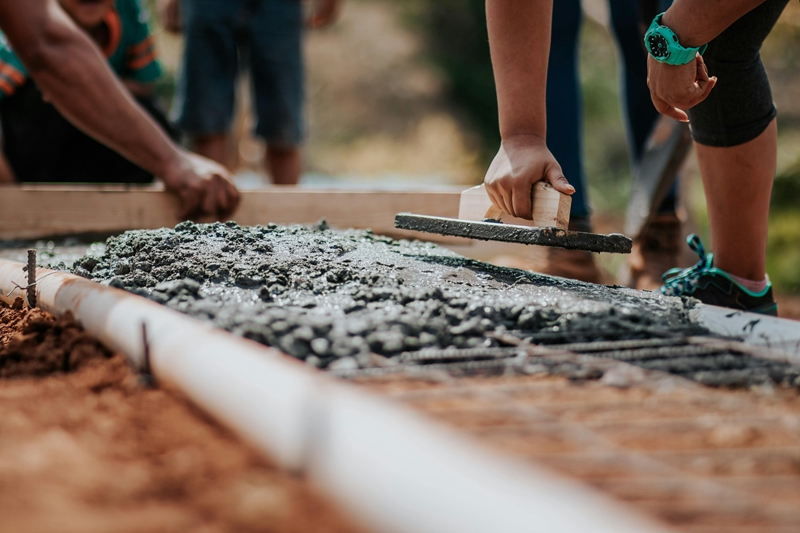Tel:86-0750-6228802
Fax:86-0750-6228277
Mobile Phone:+8617718861990
Email:yingtong@yingtongpack.com
Address:Xinsha Industry, Muzhou Town, Xinhui District, Jiangmen, Guangdong Country Region China
Pp Woven Cement Bags, or polypropylene woven cement bags, are bags for packaging cement made of polypropylene (PP) particles as the main raw material through a weaving process. This bag has been widely used in the packaging of cement and other building materials due to its excellent physical and chemical properties.

Product color: 1-4 colors
Finished size: length 450-910, width 350-600, bottom width 80-180
Pattern customization: plastic woven bags can be customized according to customer requirements
Brand: OEM
Place Of Origin: China
Industry Application: Cement
Making Process: Composite Packaging Bag
Raw Materials: High Pressure Polyethylene Plastic Bag
Bag Variety: Upright Bag
Application: Chemical
Feature: Bio-Degradable
Material: PP
Shape: Square Bottom Bag
Our main products include Kraft Paper valve bag, WPP Valve Bag, Kraft Paper Bag with Plastic Liner, cement woven bag, woven valve bag, kraft paper cement bag, etc.
High strength and durability: Polypropylene woven bags have high tensile strength and toughness, can bear the weight of heavy objects such as cement, and are not easy to break. At the same time, its wear resistance is also good, and it can withstand friction and extrusion during transportation and storage.
Waterproof and moisture-proof: The polypropylene material itself has a certain waterproof property, and the mesh structure on the surface of the woven bag can effectively prevent the penetration of moisture and protect the cement in the bag from moisture.
Chemical stability: The chemical properties of polypropylene woven bags are stable, and they will not react chemically with building materials such as cement, ensuring that the quality of the cement in the bag is not affected.
Environmentally friendly and recyclable: Polypropylene materials can be recycled and reused, meeting environmental protection requirements. Used woven bags can be recycled to reduce environmental pollution.
Customized printing: Polypropylene woven bags can be customized and printed according to customer needs, such as brand logos, product information, safety warnings, etc., to improve product recognition and market competitiveness.

Polypropylene woven cement bags are widely used in the packaging of building materials such as cement. Specific application scenarios include but are not limited to:
Cement plants: Cement plants are one of the main users of polypropylene woven cement bags. These bags are used to package cement for easy transportation and storage. In the production process of cement, the strength and durability of woven bags are particularly important to ensure that the quality of cement is not affected.
Construction sites: On construction sites, polypropylene woven cement bags are used to store and transport cement. Workers can easily pour cement into mixers for construction. The lightness and portability of woven bags also greatly improve construction efficiency.
Logistics and transportation: Polypropylene woven cement bags also play an important role in logistics and transportation. They can protect cement from damage during transportation and ensure that the quality and quantity of cement meet customer needs. At the same time, the stacking and stability of woven bags are also good, which is convenient for logistics personnel to load and unload and stack.

In order to ensure that polypropylene woven cement bags can maintain their excellent performance for a long time and extend their service life, the following are some maintenance suggestions:
Storage environment: Polypropylene woven cement bags should be stored in a dry, ventilated, and cool place, avoiding direct sunlight and high temperature environment. At the same time, ensure that the humidity of the storage environment is moderate to prevent the bags from getting damp and moldy.
Avoid heavy pressure: During storage and transportation, avoid heavy pressure or squeezing of woven bags to prevent deformation or damage of the bags. Stacking should be carried out in accordance with the specifications to ensure the stability and safety of the bags.
Regular cleaning: Clean polypropylene woven cement bags regularly to remove dust and stains on the surface. Use a soft cloth or brush when cleaning, and avoid scratching the surface of the bag with hard objects or sharp tools.
Avoid contact with chemicals: During use and storage, avoid contact between woven bags and chemicals to avoid chemical reactions that cause the bags to deteriorate or break.
Replace in time: During use, if the woven bags are found to be damaged, deformed or aged, replace them with new bags in time to ensure the quality and safety of the cement.
In addition, the following points should be noted for the maintenance of polypropylene woven cement bags:
Avoid contact with sharp objects: Sharp objects may scratch the bag and cause cement leakage. Therefore, during transportation and stacking, avoid contact between the bag and sharp objects.
Avoid excessive pulling: During transportation and stacking, avoid excessive pulling of the bag to prevent the bag from deformation or damage. The correct approach is to use tools such as forklifts or cranes for transportation and stacking.
Pay attention to sun protection: Polypropylene woven cement bags may age after long-term exposure to sunlight, causing the bag to become brittle and easy to break. Therefore, during storage and use, pay attention to sun protection measures.
 WhatsApp:
WhatsApp: Phone:
Phone: Contact Now
Contact Now